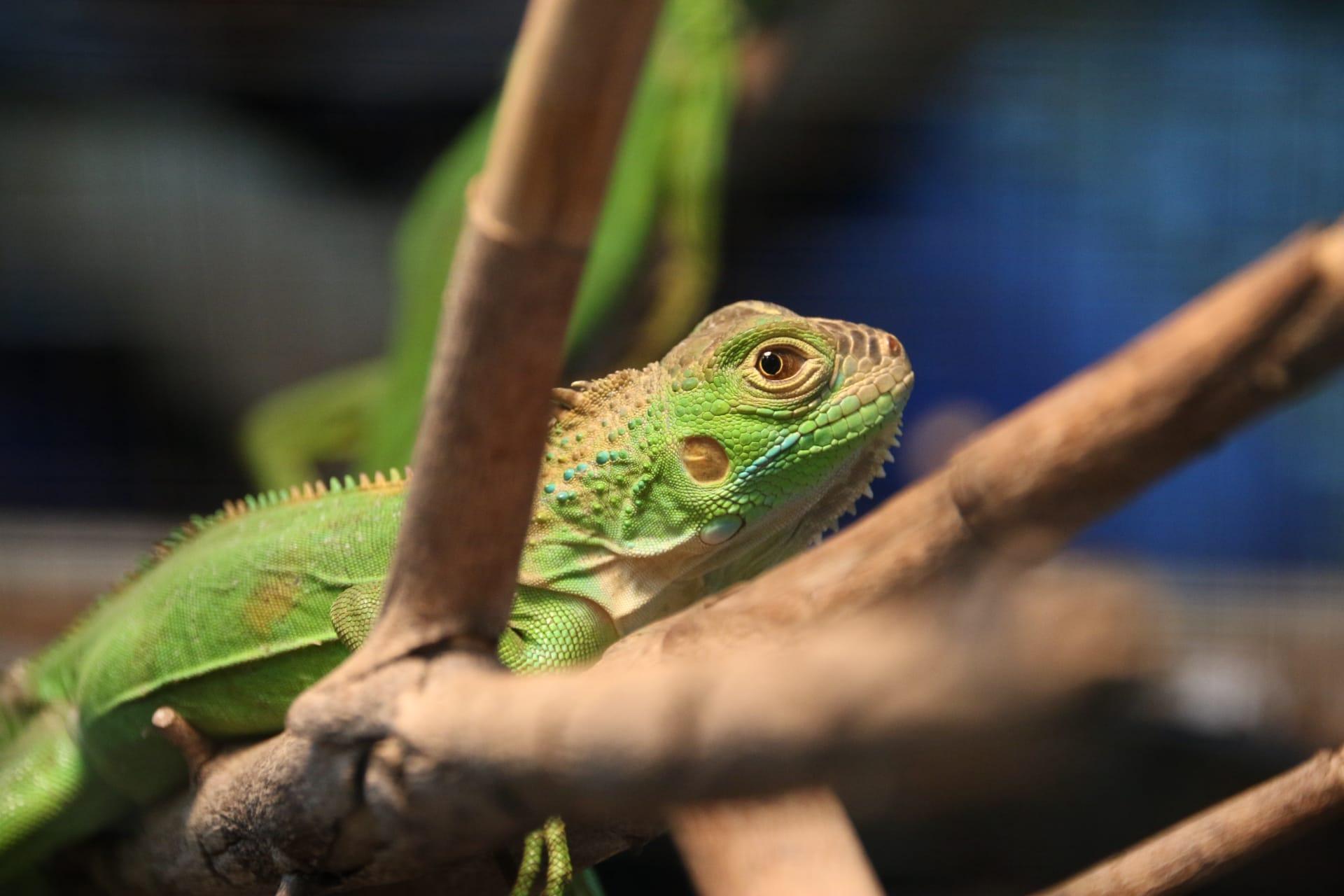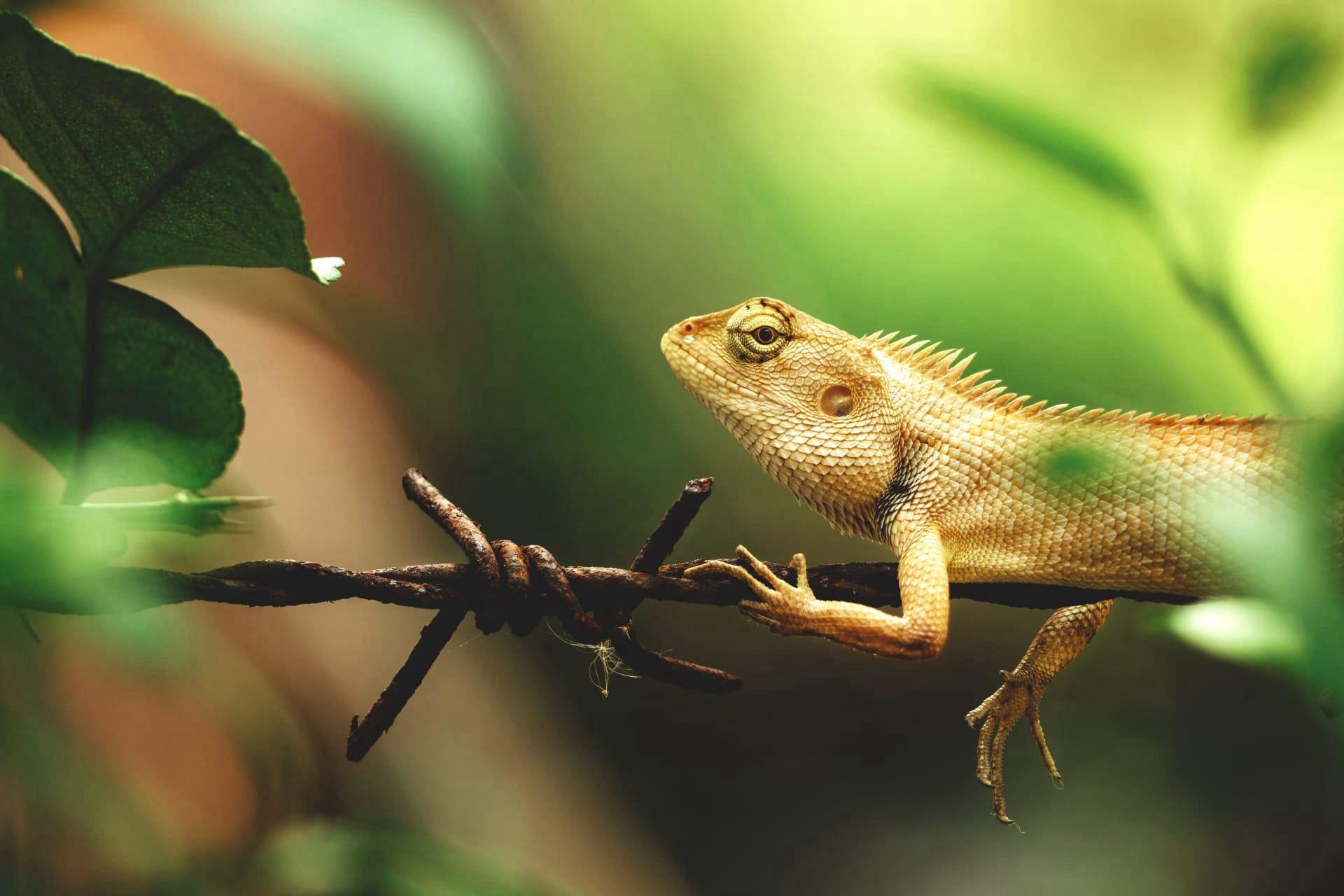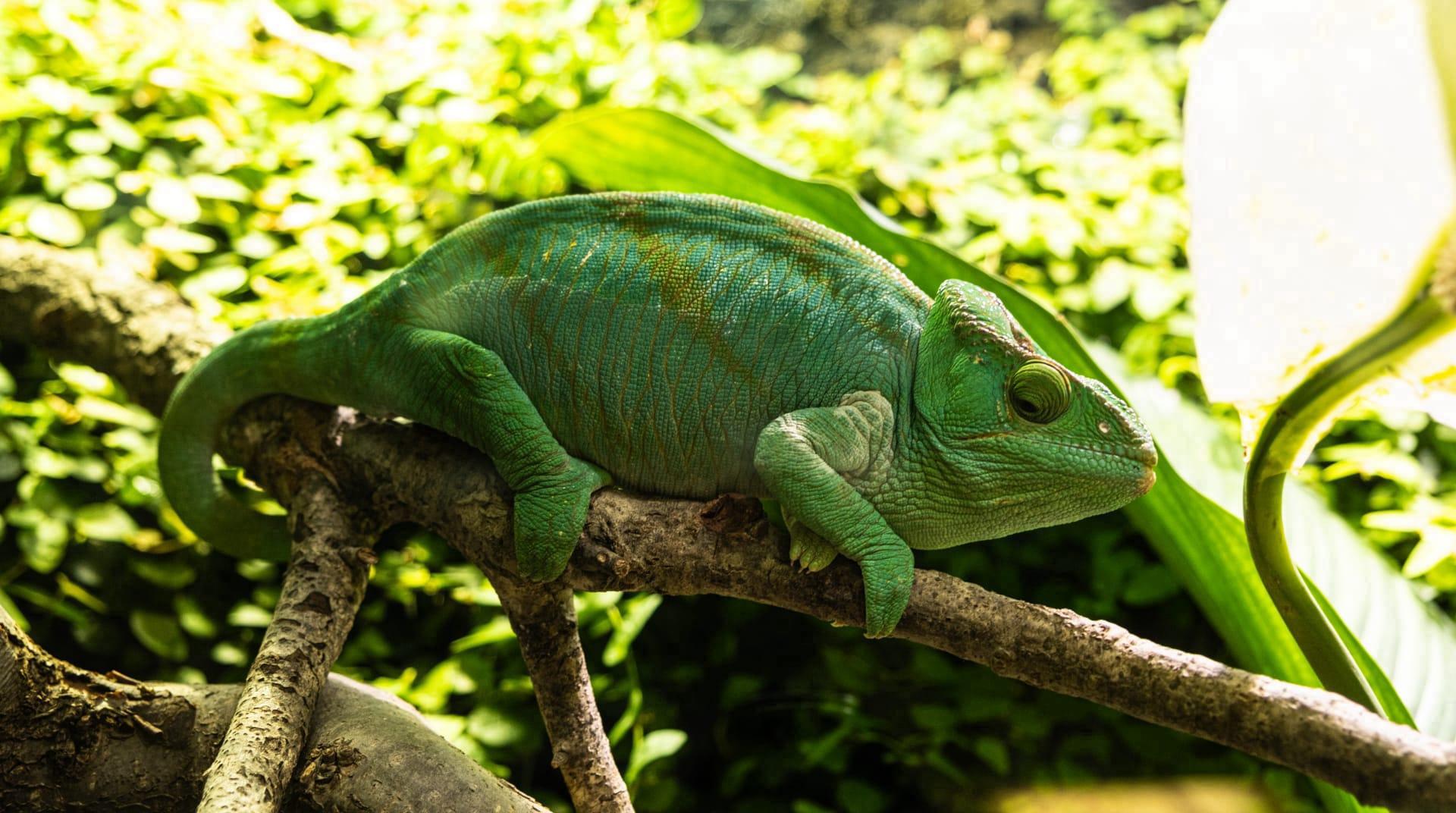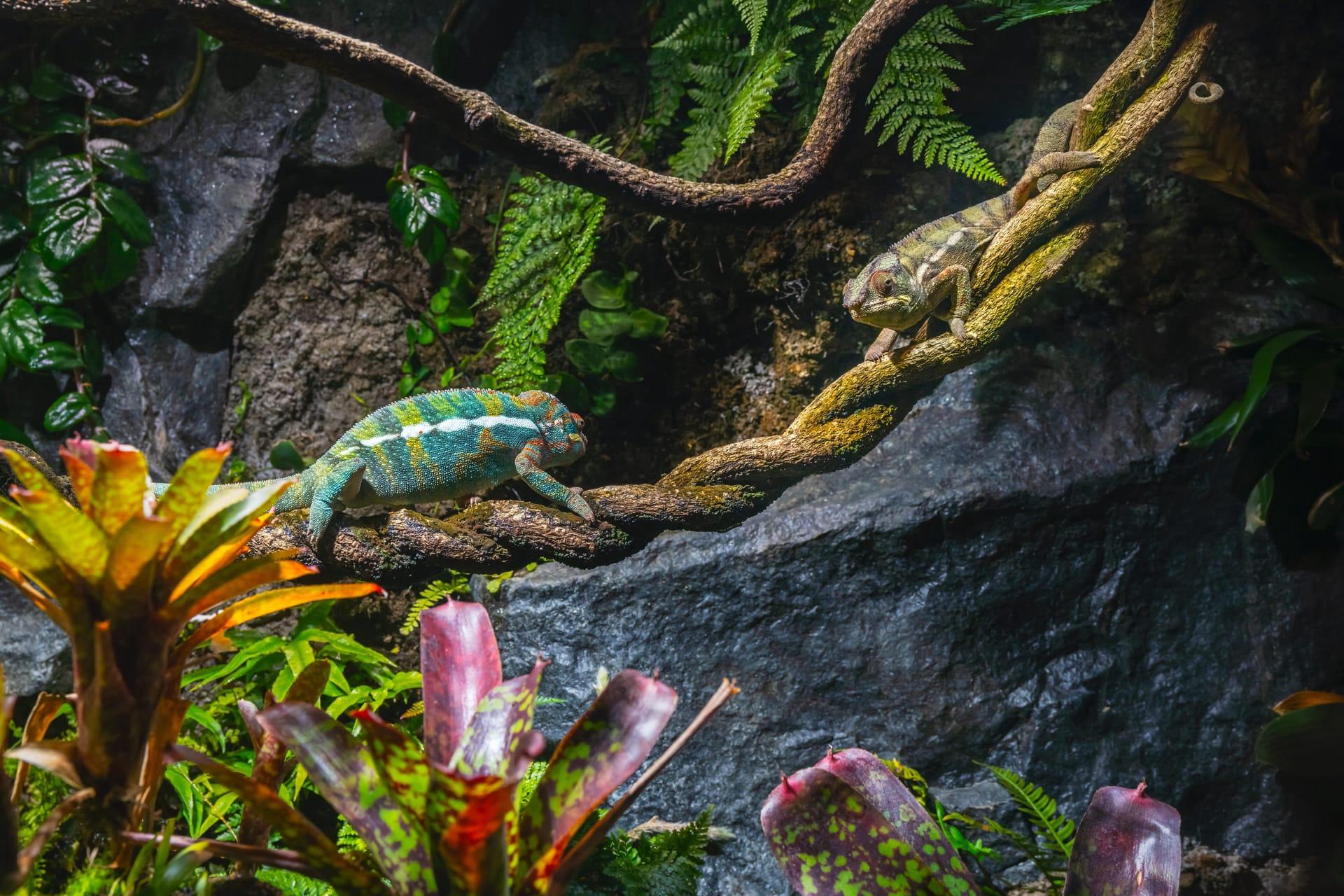1
Chameleons are renowned for their ability to change color, a trait often mistakenly attributed to camouflage. In reality, color change in chameleons is more about communication and temperature regulation. For example, a chameleon might turn darker to absorb more heat and warm up, or display bright colors to signal its mood, attract mates, or intimidate rivals. These color changes are controlled by specialized cells called chromatophores, which contain different pigments. Under the chameleon's transparent outer skin layer, these cells expand or contract to show or hide the pigments, creating an astonishing array of colors.
Another astonishing fact about chameleons is their unique eyes. Each eye can pivot and focus independently, allowing them to observe two different objects simultaneously. This gives them a full 360-degree view around their body. When hunting, a chameleon can focus both eyes in the same direction, achieving a highly accurate depth perception and precision in targeting prey. This binocular vision allows them to accurately gauge the distance to their prey, which is crucial for their tongue to strike with remarkable precision. Their tongue, in fact, can be as long as their body and launches at high speed, capturing prey in a fraction of a second.

2
Chameleons have a remarkable adaptation in their feet, perfectly designed for a life in the trees. Their feet are zygodactylous, meaning they have two toes pointing forward and two backward. This unique arrangement gives them a strong grip on branches and leaves, making them excellent climbers. Their feet work like tongs, grasping branches securely as they navigate through the foliage. This adaptation is crucial for their arboreal lifestyle, where agility and stability are key for survival.
Did you know that chameleons don't have typical ears like many other animals? Instead, they lack external ears but have a keen sense of vibration. They can detect sound frequencies between 200 Hz to 600 Hz by sensing vibrations through the ground and objects they are in contact with. This unique hearing mechanism helps them stay alert to predators and other dangers without the need for external ears. It's a fascinating adaptation that underlines the chameleon's extraordinary evolutionary journey, fine-tuning its senses to thrive in its environment.

3
The tongue of a chameleon is a remarkable feat of nature. When extended, it can be twice the length of their body and is capable of reaching its prey in just 0.07 seconds. That's faster than the blink of an eye! The tip of the tongue is a bulbous, muscular structure covered in sticky mucus, ensuring that once it hits the prey, the prey sticks firmly. This incredible speed and accuracy are vital for a predator that relies on stealth and surprise.
Chameleons have a unique way of staying hydrated. They drink water by licking dew or raindrops from leaves rather than drinking from a water source directly. Their scaly skin channels water droplets towards their mouth, allowing them to efficiently collect and consume water. This method of hydration is perfectly adapted to their tree-dwelling lifestyle, where standing water is scarce. It's a brilliant example of how chameleons are perfectly attuned to their natural habitat, making the most of the resources available to them.

4
Chameleons have a fascinating social behavior that involves body language and color changes. During social interactions, they communicate their intentions and emotions through specific color patterns. For instance, males exhibit brighter colors to assert dominance or attract females, while submissive chameleons show darker or muted colors. This visual language is an integral part of their interaction, helping to avoid unnecessary conflicts and facilitating mating rituals.
One of the lesser-known facts about chameleons is their slow and deliberate movement. They move cautiously, often in a jerky, stop-start manner. This movement style helps them blend into their surroundings, mimicking the swaying of leaves and branches. This not only aids in camouflage but also helps them approach prey without startling it. Their ability to remain virtually motionless for extended periods further enhances their stealth, making them adept hunters in their leafy world.

5
Chameleons are not just tree dwellers; some species are quite comfortable on the ground. For example, the dwarf chameleon species in Madagascar are often found scurrying on the forest floor. Their small size and ground-dwelling habits make them unique among chameleons, which are typically known for their arboreal lifestyle. This adaptation allows them to exploit a different ecological niche, hunting for insects and other small prey on the ground.
Lastly, chameleons have a long lifespan compared to many other reptiles. Some species can live up to 10 years in captivity. This longevity is quite impressive, considering their size and the many challenges they face in the wild, like predators and habitat loss. Their ability to live for a decade underlines their resilience and adaptability, traits that have enabled these fascinating creatures to survive and thrive in various environments.